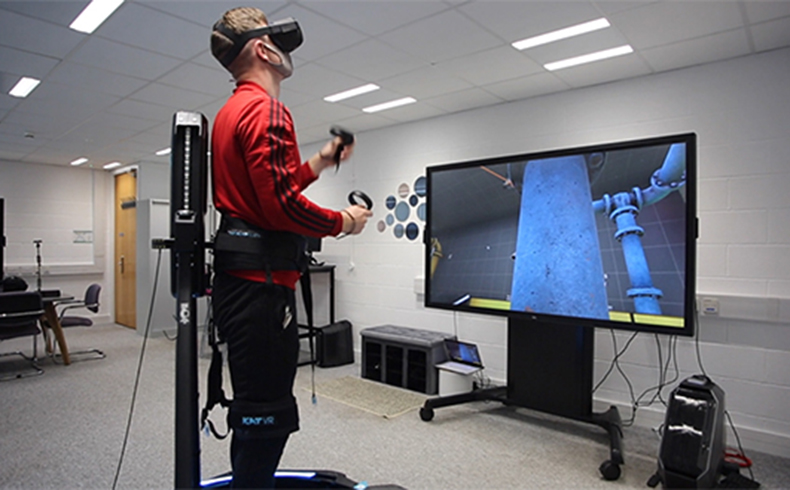In order to experience an immersive Virtual Reality (VR) environment, a VR headset is required. A VR headset will block out the view of the real world through the headset. These headsets can either be Mobile (Oculus Quest) or wired (HTC Vive.) In this article, the benefits and constraints of each equipment application shall be discussed.
Mobile (Quest):
The Quest was released in mid 2019 and is an all-in-one wireless VR experience, no other equipment is required. This makes setting up much easier and quicker.
With a wireless VR experience, the user has freedom of movement and would not be restrained by the length of the cable or get tangled.
Although it is wireless, there is the option to connect the Quest to a VR Ready PC or laptop to use better graphical details. The Quest is the best of both worlds, Mobile and Wired.
The Quest is one of the more VR affordable headsets to purchase.
Although the Quest is wireless and does not require any other equipment, the graphical details are not as impressive as it would be wired. If more graphical details are required, a VR Ready PC or Laptop would be needed. These can be expensive and may not be in everyone’s budget.
The battery life on the Quest does not last very long, approximately two hours. It would need to be charged a lot if frequently used. Whereas, wired headsets do not need to be charged at all.
Benefits of the Quest to research:
The Quest is much more portable than a wired VR headset, it can be easily transported to sites if needed for user testing, does not require any other equipment and can be used anywhere. Set up is quick and easy and user testing can begin right away.
Wired VR ( HTC Vive):
HTC Vive is a wired virtual reality headset which requires a virtual reality compatible PC to get a fully immersed experience. As the Vive is wired we get a premium image quality. PC can render images of extremely high quality, larger polygons, and better shadows which gives us the better sense of immersion. Vive also includes motion controllers and external sensors which give a whole room VR experience.
Vive can also determine the six degree of freedom (6-DoF) which allows us to track translational motion as well as rotational motion.
We can determine whether a user has rotated their head and moved forward or backward, laterally or vertically, up or down. This type of tracking is important for VR experiences with translational motion and gives the user a lot more freedom to explore locations, inspect details and perform real life tasks in VR.
The main disadvantage of a Vive PC-tethered VR headset is that it is expensive in comparison with a wireless quest headset, and it requires two compatible base stations and two compatible motion controllers to fully work. The latest HTC Vive pro 2VR headset released in June 2021 costs around €925 only for the headset but it provides a 5K resolution display,3D spatial audio, wide range of adjustable inter pupillary distance and precision with hand gestures.
To conclude, there are pros and cons to both the Quest and Vive options. Budget, image quality, potential application, and portability are just some of the factors to consider when choosing between mobile and wired headsets.
This article was originally published on the Walton Institute website.
